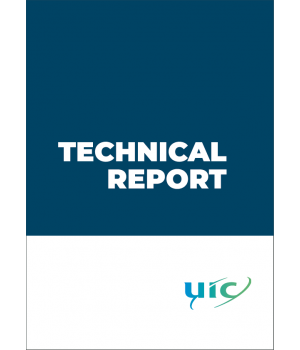


The whole procedure concerning the development of the LL- block is described in report B 126/RP 36, issued in 2009. Even though all requirements as defined in UIC Leaflet 541-4 have been fulfilled sufficiently, a final homologation of the System LL blocks was not possible due to some still open questions. However, it was decided to extend the preliminary homologation to large scale in-service tests. Based on this homologation the project EuropeTrain was designed as a train running in commercial service representing different vehicle types and brake equipment.
The friction material selected for the equipment of the EuropeTrain (C952-1 and IB116*) was subject to the full test procedure according to Leaflet 541-4 (4th edition, December 2010).
Both products sufficiently fulfilled all safety requirements as requested in the Leaflet and would have been able to start ordinary large-scale service tests in different applications under the condition that the equivalent conicity of the wheel sets would have to be determined after an initial 50,000 km and then every 25,000 km as specified in the “Usage guidelines for composite (LL) brake blocks”.
Especially this requirement causes enormous additional logistics in the operation, bears the risk of unsafe operation (if not considered carefully) and adds an unacceptable supplementary financial burden to the operators. So UIC launched the EuropeTrain project with three major objectives:
To get more insight into the correlation between equivalent conicity and running behaviour, selected vehicles are equipped with accelerometers and a data logger system to determine any increases in acceleration or unstable running behaviour during operation. Wagons with increased equivalent conicity are subject to specific dynamic tests on standardised track in accordance with UIC Leaflet 518 to determine whether this increase is still acceptable considering the running behaviour of the vehicle.
As a result of more than 200.000 km of successful operation throughout Europe and several special running tests according to UIC Leaflet 518, this report shows a very clear comparison of the development of equivalent conicity over the mileage between the different block materials, provides a deeper understanding of the correlation between equivalent conicity and running behaviour and provides a huge data base for LCC analyses.
| ISBN | 978-2-7461-2179-9 |
| Pages | 206 |
Data sheet